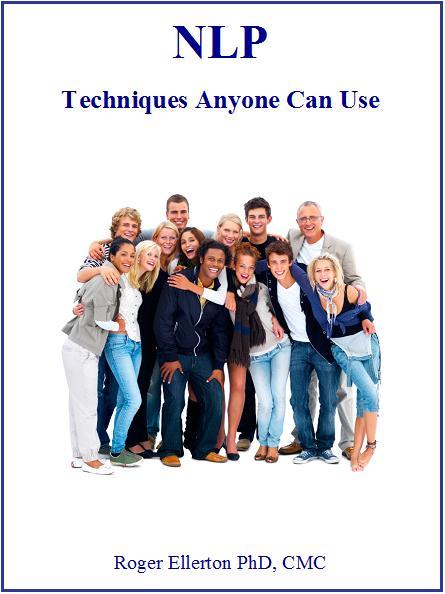The View from the Other Side of the Desk:
Speak to Me in a Way I Feel Understood
By Roger Ellerton Phd, ISP, CMC, Renewal Technologies Inc.
Originally published at www.mpamagazine.com.au, August 2013 and www.insurancebusinessonline.com.au, September 2013.
The article in www.mpamagazine.com.au refers to Mortgage Brokers (as does this article). The article in www.insurancebusinessonline.com.au refers to Insurance Brokers. Other than that the text is the same and relevant to any situation where you would like another person(s) to buy your product, service or idea. That is, anywhere two or more people interact, especially interactions within your family or at work.
This article may not be republished without written permission from Roger Ellerton/Renewal Technologies Inc. If you republish this article without permission, you will be in violation of copyright law and sent an invoice. You may share this and other pages with your friends by linking directly to this page from your website or blog.
In a previous article, we discussed the importance of determining your client's needs and values (RIGHTS) and then presenting your offering in a way that shows these RIGHTS are addressed.
Equally important is how your client expresses their RIGHTS. Each one of us experiences the world around us in our own unique way; that is, we tend to focus on certain types of information to the exclusion of others. For example, some people focus on what they want to achieve; others are more interested in avoiding potential problems.
With the former, you would emphasise how your proposed solution would help them to achieve what they want. With the latter, you would point out how your proposed solution would allow them to avoid potential problems.
The words and phrases we use give away our world view. By listening carefully to a client's communication style, we can work out what's important to them and adjust our responses appropriately. And these are exactly the words you can use to motivate them. Listen for the key words and phrases that betray your client's views, and use the same words and concepts to explain your offering.
The added advantage is that these words also have a clear meaning to your clients, reducing the risk of misunderstanding. Therefore, if they talk about 'avoiding a potential problem', then say that when presenting your offering, instead of referring to 'mitigating undesired consequences'.
Your natural tendency will be to express your thoughts in terms of how you experience the world. If you focus on achieving, then you will describe your mortgage options in what your client can achieve. However, if your client is focussed on avoiding problems, they may decide your suggested approach does not address their issues, even if it does.
This article presents three different communication styles. (For more information on these and other communication styles, please see NLP Meta Programs) Each style represents a continuum from one extreme to another. For a specific communication style, you may be positioned in the middle, between the two extremes. For others, you may be at one of the extremes. If you have difficulty imagining or relating to someone who lives their life as described by one extreme, you are probably at the other end of the range. On the other hand, if you relate entirely to one of these descriptions, this is most likely true for you.
To be effective in communicating with your client, identify your tendencies for the following styles and then practice speaking with someone who has different preferences.
The person with the most flexibility in their behaviour will have the most influence.
- Cybernetics
Toward vs Away From
Toward people are focused on their goals. They are motivated to have, achieve and attain. They are clear about what they want. Toward buyers will be motivated to buy what you have if it will help them achieve what they desire in their life.
Typical phrases that these people often use and you can use to motivate them are: accomplish, attain, get, achieving, goals, results and outcomes.
Away From people often see only what may go wrong in a given situation; they notice what should be eliminated, avoided or repaired. They are motivated when there is a problem to be solved or something needs fixing. Away From buyers will be inclined to buy what will allow them to fix or minimize what they perceive is broken or wrong.
Typical phrases for Away From people are: avoid, steer clear of, prevent, eliminate, solve, get rid of, fix, prohibit.
If you have a preference for Toward and your client has a tendency for Away From, they may find your suggestions annoying as you may be overwhelming them with things that can be achieved, while not fixing perceived problems.
A person who is part way between the two extremes will use both types of words and hence be motivated by a combination of both types of words.
Internal vs External
Internal people have internal standards and use them to make their own judgments about you or your offering. They have difficulty accepting other people's opinions. If they receive negative feedback regarding something they believe to be correct, they will question the judgment of the person giving the feedback. They assess the validity of information from outside sources according to their own internal standards.
You can motivate this type of person with the following phrases: you know what's best, only you can decide, it is up to you, I need your opinion, "Here are some possible approaches. What are your thoughts?"
External people need outside direction and feedback to decide on the mortgage that is best for them. Without external validation, they may feel confused. They will base their decision on what the media or experts have to say or will turn to you as an expert for your opinion.
Key phrases are: according to the experts, your friends will think highly of your choice, this is the product most people are choosing.
Options vs Procedures
Options people are motivated by the possibility of doing something in an alternative way. They enjoy bending the rules or exploring new ideas and possibilities. An options client may continue to explore other alternatives, even when the best one for their situation has been identified. You can motivate this person by saying, "Taking this action now will keep your options open."
Typical phrases used by Options people and you can use to motivate them are: alternatives, bend the rules, flexible, unlimited possibilities, expand your choices, options.
Procedures people like to follow established rules and processes. They are more concerned about how to do something than about why they should do it. Bending the rules is sacrilege. A procedures person will be interested in the process, rather than the outcome. To motivate a procedures person, for example, state that there are five critical steps to acquire a mortgage. Tell them what these five steps are. Then lead your client through these steps in the order you specified.
Key phrases for Procedures people are: correct way, tried and true, first, then, lastly, proven path.
Author: Roger Ellerton is a certified NLP trainer, certified management consultant and the founder and managing partner of Renewal Technologies. The above article is based on his book Win-Win Influence: How to Enhance Your Personal and Business Relationships .
Copyright © 2013, 2016 Renewal Technologies Inc. All rights reserved.








